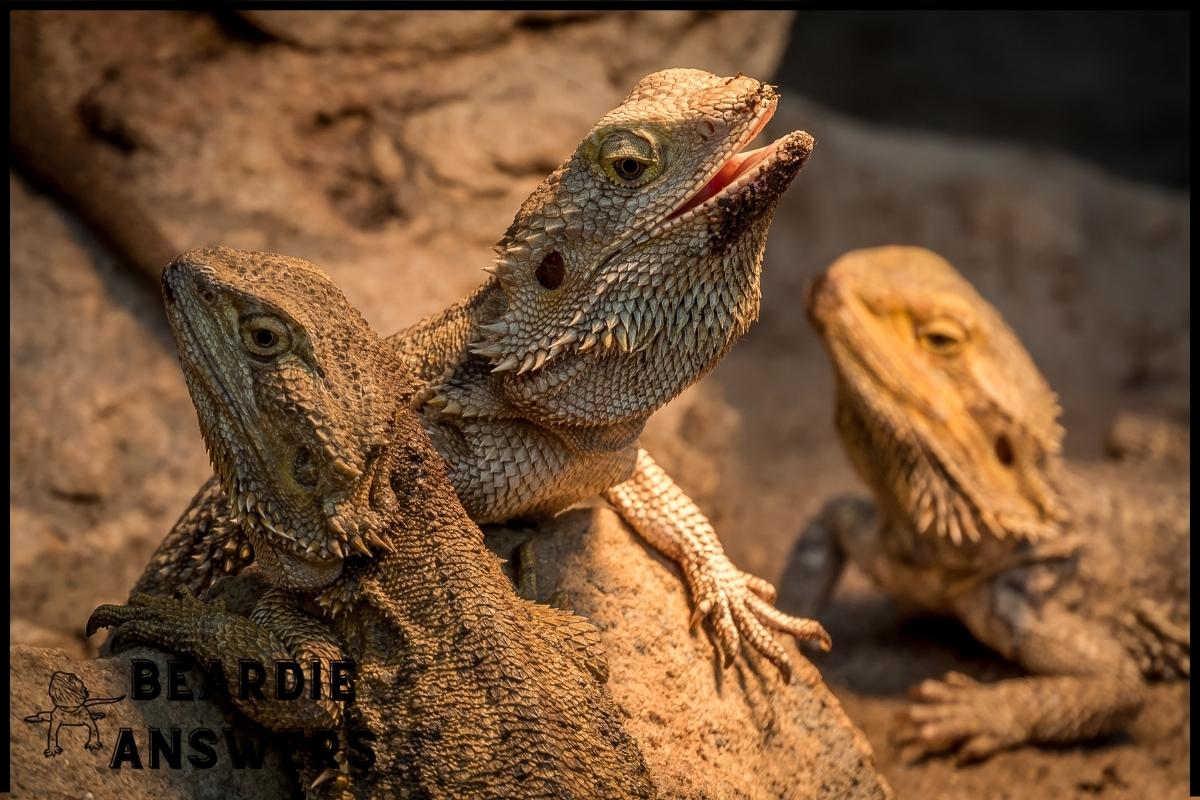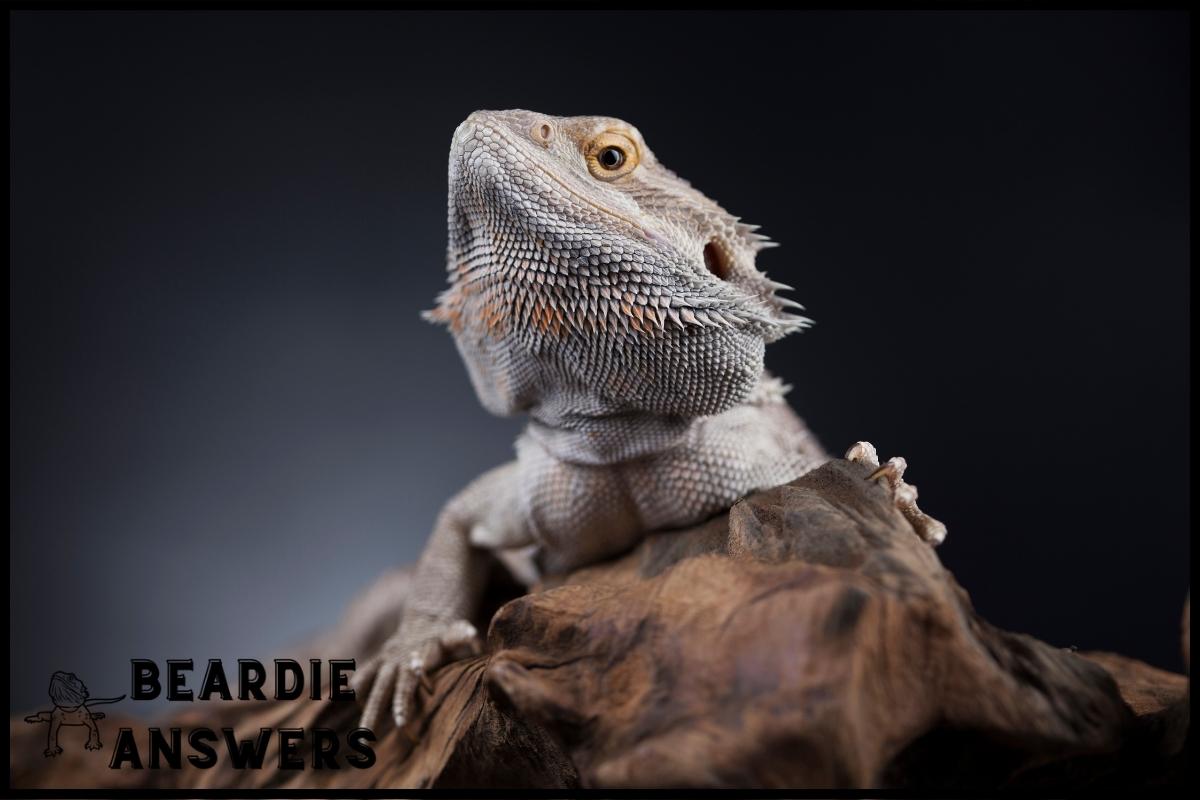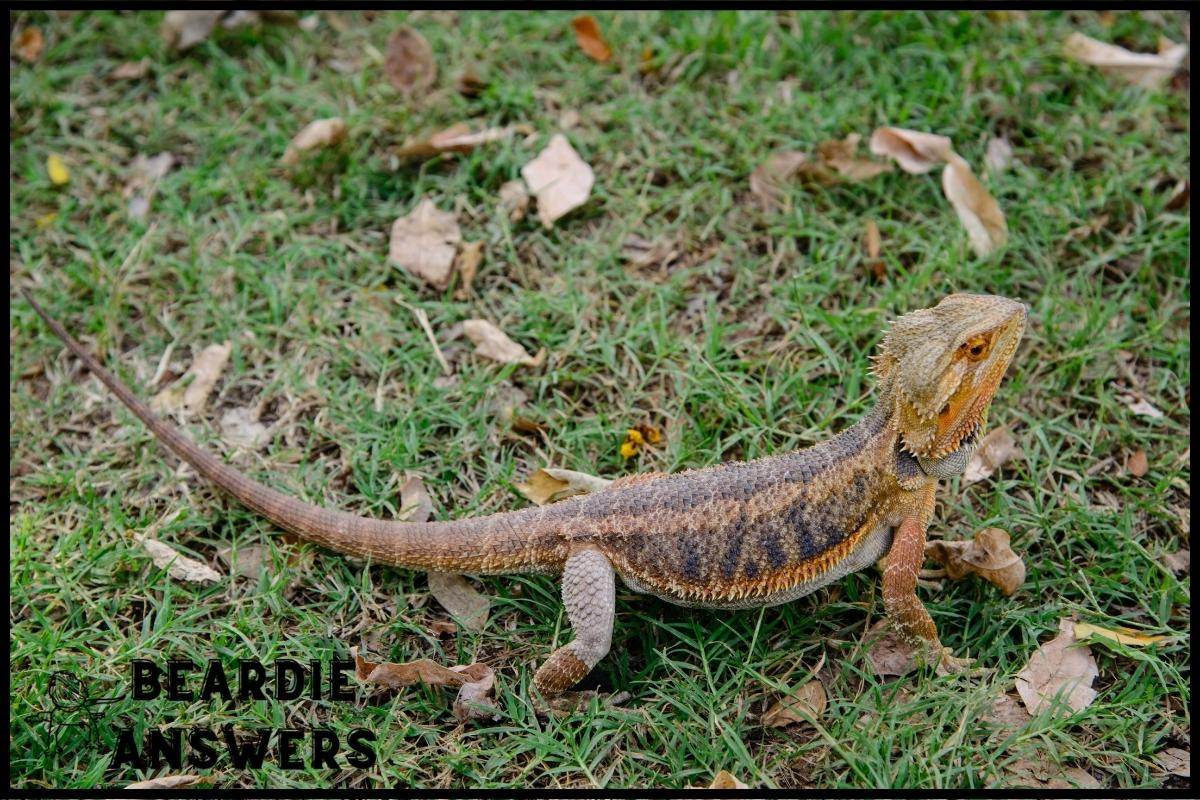Wild bearded dragons eat a diverse diet that includes insects, such as crickets, grasshoppers, and beetles, as well as vegetation, including flowers, fruits, and leaves. They also eat small animals, such as rodents and lizards, but these are less common in their diet.
What You'll Learn
Overview Of Wild Bearded Dragon Diet
Wild bearded dragons are omnivorous lizards that live in the deserts of Australia. They need to consume a variety of foods to ensure they get enough nutrients and energy for survival. An important part of their diet is sunlight intake, which helps them regulate body temperature and absorb calcium from food sources. Additionally, habitat selection can influence what kind of food is available.
Insects make up an important source of protein for wild bearded dragons. They hunt various invertebrates like locusts, beetles, crickets, ants, and worms. These insects contain essential amino acids and fatty acids that help beardies grow strong bones and muscles as well as repair tissue damage caused by injuries or disease.
Vegetation also plays a key role in providing vitamins, minerals, carbohydrates and fiber for optimal health.
Fruits and small animals like mice may be consumed occasionally but should not constitute more than 10% of their diet due to potential health risks associated with too much fat or sugar in the diet.
With this information in mind, let’s now explore the importance of insects as a source of protein for wild bearded dragons.
Insects As A Source Of Protein
As the sun rises, wild bearded dragons emerge from their nests and hunt for food. Their sharp eyes scan the land in search of insects, scurrying across the dry desert terrain in pursuit of sustenance. Preying on these small creatures provides a protein-rich diet that gives them the energy they need to survive.
Insects are an important source of proteins for wild bearded dragon populations and provide vital nutritional benefits. These tiny creatures contain large amounts of essential amino acids which are crucial for muscle growth and development as well as other bodily functions such as digestion and immunity.
Despite the predation risk associated with hunting such small prey, wild bearded dragons have adapted to take advantage of this valuable resource while remaining safe from predators.
The benefit of insect proteins allows wild bearded dragons to diversify their diets further by taking advantage of varied vegetation found throughout their habitats. This is beneficial not only from a nutrition standpoint but also provides additional protection from potential predators due to the camouflage effect afforded by foliage.
With all the options available, wild bearded dragons can thrive in even some of the most hostile environments without going hungry. As they venture forth into uncharted territory, it’s clear why insects play such an integral role in their successful survival strategies. Transitioning seamlessly into exploring what else belongs on their menu reveals how varied vegetation supplements their dietary needs.
Varied Vegetation
Bearded dragons are known to forage for food in their natural environment. They have a wide variety of plant diversity that they incorporate into their diet, including grasses, flowers, fruits and vegetables. As omnivores, bearded dragons will also eat various insects like crickets and mealworms as well as spiders and other small arthropods they find while searching around the desert landscape.
The vegetation that these lizards consume provides them with important minerals and vitamins needed to maintain good health. During warm months when there is an abundance of available vegetation, wild bearded dragons may be seen grazing on plants throughout the day. This helps supplement their insect-based diets during times where bugs may not be so easy to come by.
As part of their natural behavior, beardies often hunt down smaller animals such as mice or baby birds to feed on.
Transitioning from this section about varied vegetation to discussing feeding habits on small animals requires more than just a simple ‘step’. Rather careful consideration must be given to how best approach understanding this unique aspect of the dragon’s dietary needs.
Feeding On Small Animals
As discussed, bearded dragons have a varied diet that includes vegetation. It is also important to note that they occasionally feed on small animals such as insects.
To ensure beardies receive the necessary nutrition for healthy living, it’s important to provide them with food choices from both categories:
- Crickets
- Mealworms
- Waxworms
It’s not enough to simply offer these foods; you must also “gut load” or supplement their diets. This means providing extra nutrients and vitamins by gut loading crickets before feeding them to your dragon.
When done correctly, this will help ensure your pet gets all of the essential vitamins and minerals needed for growth and development. Additionally, try to provide a variety of insect types in order to vary up their nutritional intake.
A cricket variety like Dubia roaches is an excellent choice because they are high in calcium, protein, and other beneficial nutrients.
Ultimately, having access to diverse dietary options helps keep your bearded dragon happy and healthy. By supplementing their regular diet with various insects and vegetables, you can guarantee they get all the essential elements they need while staying well-nourished throughout life.
With care and attention given to their nutritional requirements, wild bearded dragons can thrive just as much as those kept in captivity!
Nutritional Requirements For Healthy Living
Bearded dragons need specific nutritional requirements in order to live healthy lives. A balanced diet is important for these reptiles, and the table below outlines what they should be consuming:
| Food Group | Nutrition Requirements |
|---|---|
| Insects | High-quality protein |
| Vegetation | Fiber and vitamins |
| Small animals | Occasional intake of small prey such as mice or crickets |
In addition to dietary considerations, bearded dragons also require lighting and calcium intake to be in optimal health. UVB light is necessary in their day-to-day life; it helps them synthesize vitamin D3 which aids with the absorption of calcium. Calcium powder can be added to food items periodically so that your dragon receives adequate amounts daily. It’s important not to overfeed insects because too much protein has been linked to metabolic bone disease.
With proper nutrition, along with appropriate lighting and calcium supplementation, a captive bearded dragon will thrive and lead a long happy life! Armed with this information, you can now understand how best to provide for your pet dragon’s needs. Moving forward, let us explore the types of food ideal for a captive bearded dragon diet.
Captive Bearded Dragon Diet
In the wild, bearded dragons have an incredibly diverse diet. They feed on all sorts of insects and vegetation, as well as small animals such as mice every once in a while. Although they may seem robust and capable of eating anything, their diet needs to be carefully considered when they are kept in captivity.
Captive bearded dragons require specialized diets that not only provide them with essential nutrients but also meet their dietary requirements for growth and development. Here is what you need to keep your pet dragon happy and healthy:
- Provide them with a variety of live insects – crickets, mealworms, superworms, etc;
- Supplement their diet with some leafy greens like collard greens or dandelion tree leaves;
- Offer them vegetables like squash, carrots or sweet potatoes;
- Give them smaller portions of lean proteins like boiled chicken breast or hard-boiled eggs occasionally.
An important factor to consider is providing your bearded dragon the right environment – one that meets its heating requirements and has enough space in which it can move around freely (depending on its size). An appropriate enclosure size will allow your beardie to feel secure and comfortable at home!
Conclusion
It is true that wild bearded dragons eat a variety of things, including insects, vegetation and occasionally small animals.
To ensure the health and wellbeing of these creatures in captivity, it’s important to provide them with a diet that meets their nutritional needs.
Insects should be provided as a source of protein while varied vegetation can also help supplement their diets.
Small animals may also be offered on occasion as an additional treat but this shouldn’t replace other food sources.
By understanding what they need to thrive, owners can create diets for their pets which will keep them healthy and active throughout their lives.

Hi! My name is Bryan, I am the “one behind the words” here are BeardieAnswers.com. I believe that providing quality care and nutrition is the best way to ensure the health of your pet. Every beardie is special and deserves the best care and attention. If you have questions about your bearded dragon, please don’t hesitate to ask! View My Full Author Page




